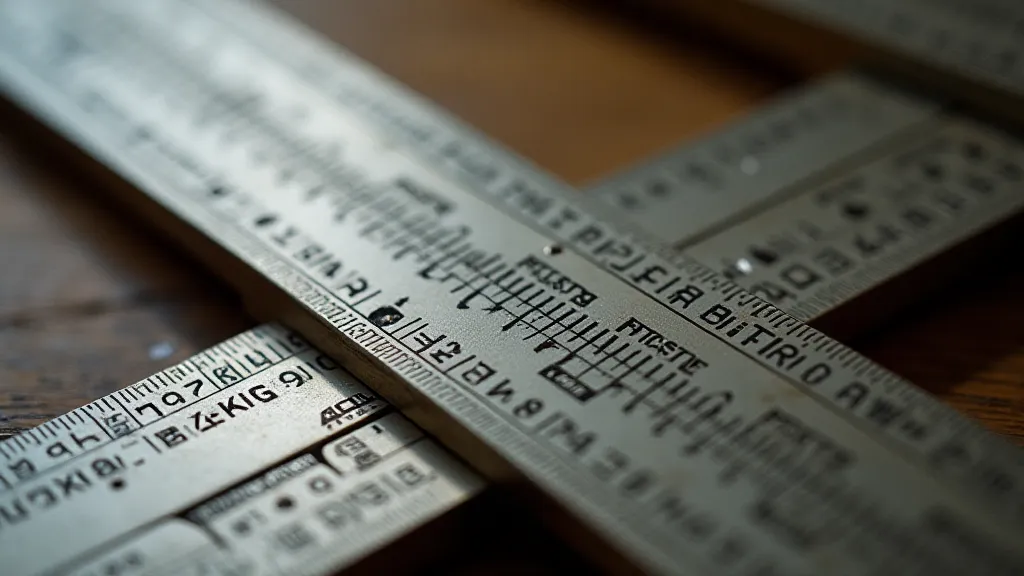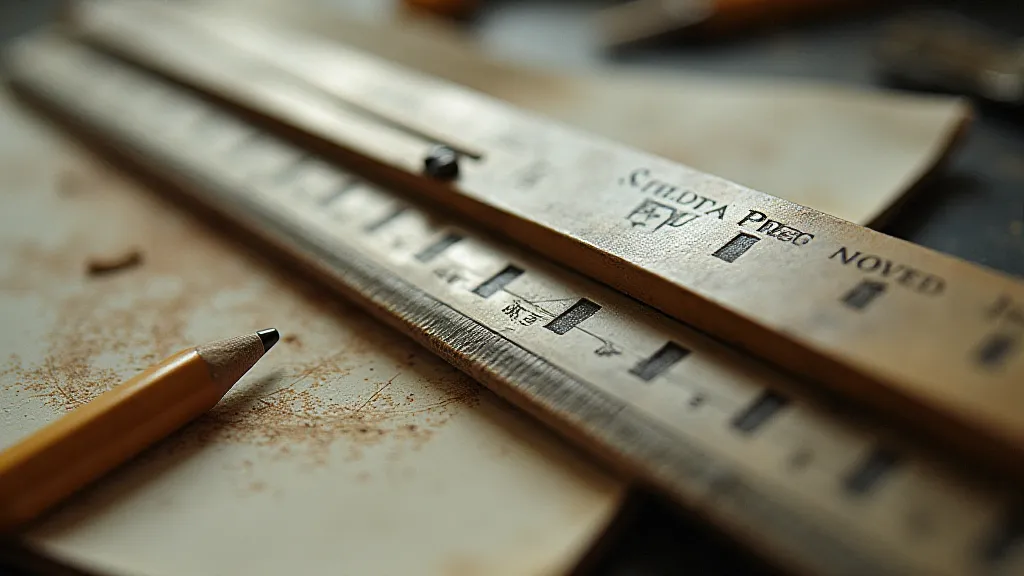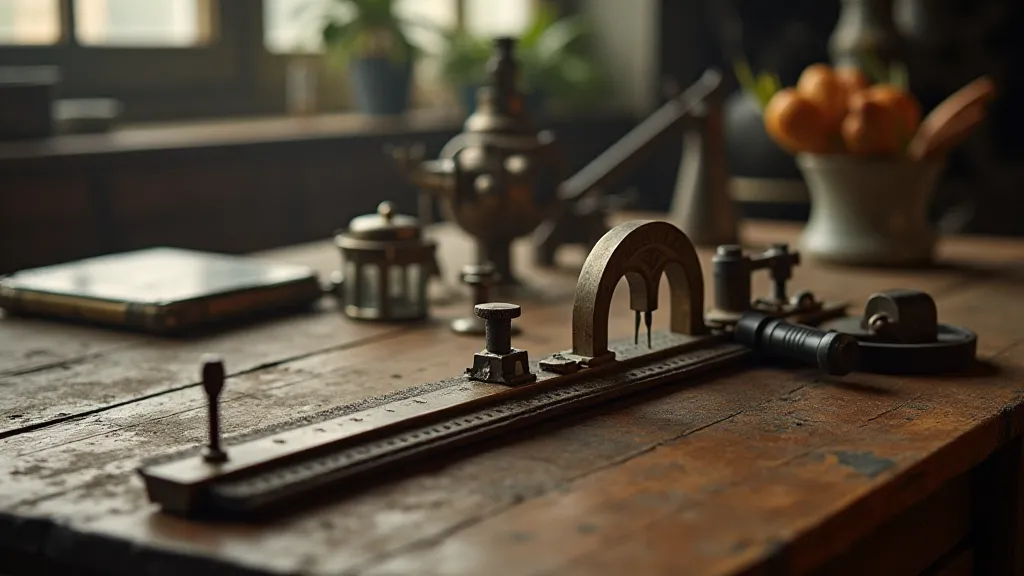The Silent Language of Scales: Deciphering Antique Slide Rule Markings
There's a certain magic in holding a vintage slide rule. It’s more than just a tool; it's a tangible link to a time when engineering was a deeply tactile and thoughtful process. Before the ubiquitous calculator, these slim, elegant instruments were the bedrock of calculations for generations of engineers, scientists, and architects. I remember the first time I held one, rescued from my grandfather’s dusty workshop – the cool, smooth feel of the ivory (or occasionally, bakelite or mahogany), the faint scent of aged wood, and the intricate network of scales that seemed utterly foreign. It felt like holding a secret.
Those scales, of course, *are* the key to unlocking that secret. They're a complex language, a silent conversation between the user and the universe of numbers. Many beginners (and even some seasoned collectors) are initially intimidated by the sheer variety of markings. Don’t let that deter you! Understanding these markings isn't just about performing calculations; it's about appreciating the ingenuity and craftsmanship that went into these incredible engineering tools.

A Brief History: From Logs to Logs
The slide rule’s evolution is fascinating. It's rooted in the concept of logarithmic scales – a mathematical shortcut discovered centuries ago. The principle is simple: the ratio of two numbers is equal to the logarithm of their product. Early iterations were quite rudimentary, often just two rulers assembled in a way to allow multiplication and division. The key breakthrough came with the development of multiple scales, allowing for more complex functions like squares, cubes, trigonometric calculations, and even logarithms themselves. Companies like Pickett, Fuller, and Keuffel & Esser became synonymous with quality and innovation, constantly refining the design and adding new scales to meet the evolving needs of engineers. The resulting tools fostered a different mindset, one focused on approximation and understanding underlying principles—a concept beautifully explored in articles like Ephemeral Equations: The Slide Rule and the Art of Approximation. This deliberate approach to calculation fostered a respect for the precision of numbers and the inherent beauty of approximation.
Consider the context: Imagine being a civil engineer designing a bridge in the 1930s, relying solely on this slender instrument for critical calculations. The precision required, the mental agility needed to manipulate the scales – it fostered a deep connection between the engineer and their work, a respect for the numbers and the process. These weren’t disposable tools; they were heirloom pieces, passed down through generations. This legacy of precision extends far beyond simple calculations and profoundly shaped disciplines like cartography, as discussed in The Cartographer's Tool: How Slide Rules Shaped Mapping and Surveying. The ability to estimate and approximate was a crucial skill, leading to a certain elegance in problem-solving, an aesthetic that appreciated the ingenuity of finding the closest solution with the tools available – a far cry from the instantaneous results we're accustomed to today. The focus wasn't just on the numerical answer, but on the journey to achieve it, on understanding the underlying mathematical relationships.
Decoding the Scales: A Primer
Let's break down some of the most common scales you're likely to encounter on a vintage slide rule. While variations exist between manufacturers and models, certain scales are near-universal.
- C Scale: This is the fundamental scale. It’s essentially a logarithmic scale that extends from 1 to 10. The runner (the movable portion of the slide rule) uses this scale for multiplication and division.
- D Scale: The D scale is identical to the C scale, but often numbered differently. It’s used in conjunction with the C scale for multiplication and division. Think of them as a pair.
- A & B Scales: These are squares. The numbers on the A scale are the squares of the corresponding numbers on the C scale. The B scale is a reciprocal scale used with the A scale for division.
- K Scale: This is a cube scale, derived from the C scale.
- CI Scale: This is the inverse of the C scale, useful for calculating reciprocals.
- STI Scale: (Sine-Tangent-Inverse) This is a powerful scale for trigonometric calculations. Understanding the relationship between the sine, tangent, and inverse functions on this scale is crucial.

The Art of Notation: Identifying Markings
Beyond the primary scales, you're likely to find a plethora of smaller markings. These aren't random scribbles; they're shorthand notations designed to simplify calculations. For example, you might see:
- Proportional Signs: Used to indicate ratios and proportions.
- Cycle Numbers: These numbers indicate the number of times a particular scale repeats within a given length.
- Index Marks: Tiny dots or lines used to align the runner and indicator precisely.
- Abbreviations: Manufacturers often used abbreviations to denote specific functions or constants. Researching the manufacturer’s documentation (often available online) can be incredibly helpful here.
Collecting and Caring for Your Vintage Slide Rule
Whether you're an avid collector or simply appreciate the beauty and utility of these instruments, proper care is essential. Avoid exposing your slide rule to extreme temperatures or humidity. Clean it gently with a soft cloth, avoiding harsh chemicals. Remember, these are delicate objects that have stood the test of time. A little care can ensure they continue to do so for generations to come. The ability to appreciate these tools requires an understanding of their place in history, appreciating not only their functionality but also their intangible qualities—a connection to a time when engineering was less about instantaneous results and more about thoughtful processes. Furthermore, preserving these tools is preserving a piece of technological and cultural heritage, a tangible reminder of a different era of innovation. The skills required to use and maintain these instruments provide a tangible connection to this past.
Collecting vintage slide rules is more than just acquiring objects; it’s about preserving a piece of engineering history. Each slide rule tells a story – a story of innovation, craftsmanship, and the enduring power of human ingenuity. When I hold my grandfather’s slide rule, I don’t just see a tool; I see a connection to the past, a tangible link to a time when problem-solving was a deeply personal and thoughtful process. The process of collecting and understanding these artifacts provides insight into the evolving landscape of mathematical and engineering practices.

Beyond the Scales: A Legacy of Precision
The slide rule may be largely obsolete in the age of powerful calculators and computers, but its legacy endures. It represents a different way of thinking – a slower, more deliberate approach to problem-solving that fostered a deep understanding of the underlying principles. And even today, the simple act of holding a vintage slide rule, deciphering its silent language, can evoke a sense of wonder and appreciation for the remarkable tools that shaped our world. It is, ultimately, about respecting the history of engineering and the beauty of precision. The methods of their use fostered a deeper understanding of mathematical principles than many modern calculators ever will. Often, the limitations of these tools pushed users to develop a deeper understanding of the approximations involved, a skill that is becoming increasingly rare in an age of instant results.
The slide rule's impact is undeniable. They represented not only a tool for calculation but also a symbol of a particular era—one characterized by ingenuity, resourcefulness, and a deep respect for the power of numbers. The intricate designs and precision required to manufacture them were a testament to the craftsmanship of the time. Consider the engineers who designed and built these instruments, their understanding of mathematics and mechanics contributing to a legacy of innovation. The appreciation for these artifacts isn't simply about their historical significance; it’s about recognizing the ingenuity and resourcefulness they represent. While modern technology offers unprecedented computational power, the skills fostered by mastering the slide rule—patience, precision, and a deep understanding of mathematical principles—remain valuable assets in any field. The experience of working with these tools encourages a more deliberate and mindful approach to problem-solving, qualities that are often overlooked in the fast-paced world of modern technology. The beauty of these instruments lies not only in their mechanical ingenuity but also in the way they challenge us to think critically and to appreciate the elegance of mathematical relationships. Often, the struggle to achieve an accurate answer provides a deeper appreciation for the underlying principles at play.
Understanding the historical context of the slide rule – its rise and eventual decline – illuminates not only the evolution of technology but also the changing landscape of education and engineering practices. The shift towards digital computation fundamentally altered the way problems were approached, but the lessons learned from the slide rule—the importance of precision, estimation, and critical thinking—remain as relevant as ever. Exploring the details of how these instruments were used offers a unique perspective on the ingenuity and resourcefulness of past generations, providing valuable insights into the nature of innovation and the enduring power of human intellect. The enduring fascination with these instruments speaks to a desire to connect with a time when problem-solving required not just computational power, but also a deep understanding of underlying principles and a willingness to embrace limitations.





